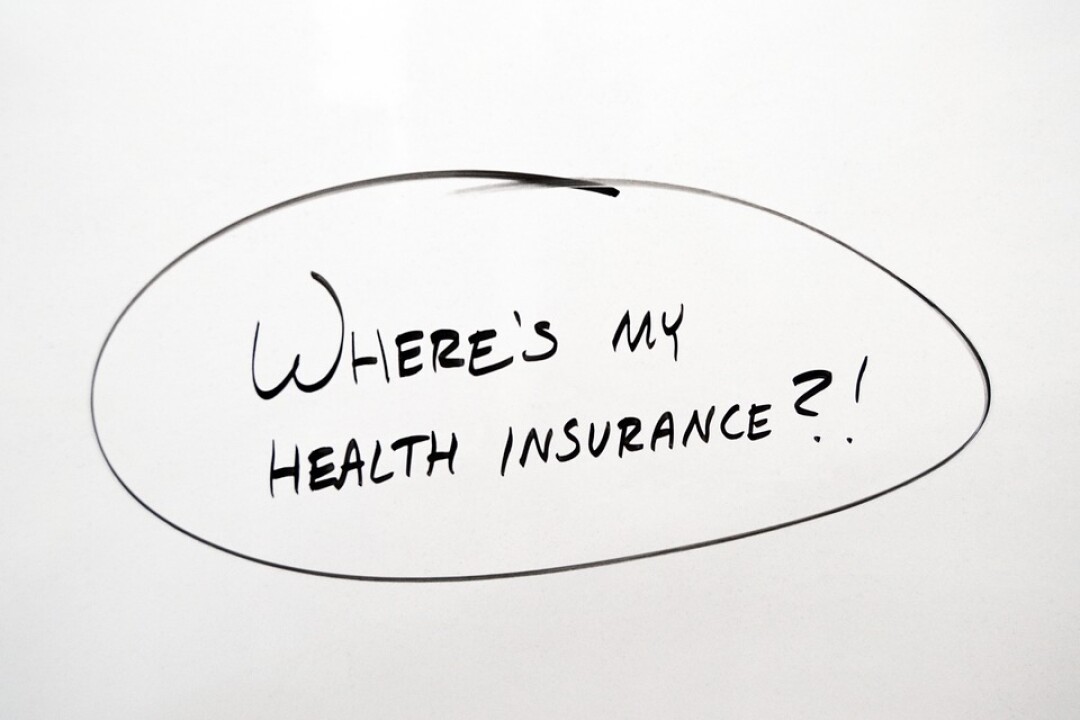News & Articles
Browse all content by date.

Predatory capitalism breeds predatory medical care
Survival in the animal world de-pends upon who eats who. Wolf packs in Yellowstone chase down the oldest, weakest elk and kill with a chokehold. Lion prides in Africa select the oldest and weakest water buffalo to kill for the survival of their young. Killer whale pods kill seals to eat – and sometimes play with them just for the hell of it. Our national symbol – the bald eagle – swoops down on a fish to eat or gorges on ditch roadkill.
At the same time we have a private predatory health care system in the United States that swoops down on the injured, sick and dying for enormous profits. We are at the top of the food chain, so we have humans who take advantage of other humans who are weak and sick from diseases, viruses, bacteria, injuries, and old worn out joints and cells.
Last words of a dying patient: ‘Who’s going to pay for it?’
Dr. Derrick Smit expressed his thoughts after witnessing the “worst thing” that has ever happened to him so far in his medical career: “Last words I’ll never forget, this was the response my patient gasped out (between labored breaths) to me and my team, after we explained that he needed to be intubated and placed on a ventilator.
We then called his wife to have him speak to her about what was likely his last opportunity, as many patients do not recover once tubed. This situation is by far the worst thing I’ve witnessed in my collective 12 years of critical care and anesthesia. Next-level heartbreak is having to hear a dying patient use his last words to worry about health care finances. This country is truly a failed state, and it’s sickening to witness firsthand, more blatantly than ever.”
I have a keen interest in health care costs because I spent 32 years at negotiation tables negotiating health care costs, salaries and other benefits; four years for the Fargo Education Association of Teachers, 17 years on the Fargo Board of Education Negotiations Committee, and 11 years as chief board spokesman involving more than a thousand employees.
In between long sessions, I often had to hassle insurance companies, doctors and hospitals over health care costs associated with a wife and seven children. I have kept files on health care costs for more than 50 years.
Great progress has been made in medicine, but the delivery to patients has been tragically devoured by predatory capitalism. The sick, injured and dying are now treated like full ATM machines.
I have hundreds of examples.
Danni Askini of Boston had been treated for lymphoma in March 2020, so one morning she felt chest pain, shortness of breath, and had a headache. She called her oncologist, who told her to go to the emergency room.
The doctor said she probably had the flu or pneumonia and sent her home. Over the next few days she developed a cough, so she went back to the emergency room. She was given two tests and sent home. Later, another trip to the emergency room for a COVID-19 test. After a week she got the hospital bill for three emergency visits and four minor tests: $34,927.43l. She had just changed jobs so she was uninsured. You can buy a snazzy new car for $35,000.
Pam LeBlanc and Jimmy Harvey of Texas went to the Austin Emergency Center for COVID-19 tests together. Both were negative. Jimmy paid $199 cash for his. Pam has health insurance. Her bill was $6,408! (Yes, that’s right!) Perhaps a local hospital CEO could explain the difference.
How many COVID-19 patients will get million-dollar bills?
Public-health experts predict that about one million Americans will be hospitalized before the virus runs its course. So far we have 2.4 million cases with about 128,000 dead. No single agency seems to know how many cases have been hospitalized, but it has to be in the many thousands. There are hundreds of bills to patients that stand out, but the following one is revealing.
Seventy-year-old Michael Flor of Seattle survived the deadly virus but received a 181-page bill of $1.1 million for his 62-day hospital stay. He was on a ventilator for 29 days which cost him $82,000. (A new ventilator runs about $35,000. which is way overpriced!)
He was charged $9,736 a day for being in an intensive care room. He was charged $409,000 for its “transformation into a sterile room.” He was near death for two days, so he was charged $50,000 a day for his escape!
Michael is on Medicare, of course, so it is picking up his bill. He’s lucky he isn’t 60. Then he’d be on the hook if he did not have insurance. As one doctor said:“This is the tragic absurdity of health care in the United States of America.”
The New York Times reported another eye-opener bill. Physically handicapped 33-year-old Janet Mendez of New York City nearly died from the virus. Mount Sinai Hospital sent her two bills: one for $401,885.57, and one for $31,165. After the hospital harassed her for payment it agreed to reduce her bill by $326,851.63! She is unable to work but was left with a $75,000 bill. She thought her insurance company would pay some of it. Doctors who treated her charged her between $300 and $1,800 for each daily visit. She will also be stuck with co-payments and deductibles. Welcome to the real world of health care finance.
This is the result of vultures feasting on the sick and the dead. Instead of a single-payer system that covers everyone, we are left with a circling maze of private insurance companies devoted to the profit motive.
Private contractor Lillian Harrison of Miami, a victim of breast cancer at age 60, pays $1,100 a month for health insurance with a $5,500 deductible. One year of coverage could cost her $18,700.
We spend $150 billion on paperwork instead of health care
The U.S. will spend about $4 trillion and $1 trillion of it will go to marketing, billing, “utilization review” (screwing the customer), paperwork, insurance administration, CEO pay, and lots of profit. How much money is spent advertising very expensive drugs over the dinner hour? It’s predatory capitalism at work.
Medicare cost 2% to administer. Insurance companies spend at least 20%. Paperwork alone takes $150 billion in medical money. Ridiculous. Why don’t we actually spend the money on health care instead of shuffling paper and issuing denials?
Each person in the U.S. spends $11,172 for health care – whether they get any or not.
The average for other high-income countries is $5,280. Every other high income country covers more than 99% of its population while we cover only 90%. We spend almost 18% of our Gross Domestic Product (GNP) on health care, while the other high-income countries average 11.5% of GDP.
Where is all this money going? Life expectancy in the U.S. is 78.8 years while other high income countries are at 81.5 years. What are almost three more years of life worth?
We use health care services at the same rates as other high-income countries – except for diagnostic tests. Tests are the Golden Goose of American health care. Example: An MRI in Tokyo might run $98. The average American price is $1,000.
To the American Hospital Associ-ation: Please explain! We average 118 MRI scans (perhaps we should call them scams) per 1,000, other high income countries average 82 MRIs.
We perform 245 CT scans per 1,000 while other high income countries do only 151. CTs are a surface gold mine!
American primary doctors have an average salary of $218,173 while other high-income country doctors average about half that. We spend $1,443 per person for prescription drugs while other high-income countries spend $749. In the last 19 years we have lost 232,000 people to prescription drug overdoses!
Drug companies spent $295 million lobbying politicians in 2019, more than any other industry.
Health care should be a public utility
COVID-19 hospitalization and treatment of millions of victims will, in the end, probably cost trillions of dollars. We spend billions on the hospitalization and treatment of victims of flu epidemics every year at an average cost of $20,000 per patient.
The COVID-19 virus will cost us a lot more because patients stay on ventilators to recover or die – and the virus is much more complicated to fight. Some virus patients have severe symptoms for three months or longer.
Americans are terrified about the costs of getting the virus or the flu. About 30 million do not have health insurance and four in ten have high deductible plans that could bankrupt them.
A Harvard University study esti-mated that 45,000 Americans die every year from lack of health care coverage because they can’t afford it.
California Representative Ro Khanna said this about the coronavirus: “The reality is, there are a lot of people that are thinking, ‘I don’t want a couple of thousand dollar bill to get tested or treated’.”
This reality just makes COVID-19 more difficult to handle.
About a trillion of health care dollars we spend each year actually aren’t spent on health. It’s wasted on insurance bureaucracies billing the absolute paper maze from private insurance companies. They must also track down patients to collect co-pays. Don’t forget the hundreds of billions in profits going to insurance and drug companies. Don’t forget excessive CEO salaries. Some are in the $80 million range.
While COVID-19 killed thousands in a three-month period, UnitedHealth Group, the largest health insurance company, saw “a significant increase” in profits! During these record profits, the company bought back $1.7 billion of its stock so stockholders and CEOs could profit more.
Take health care predators off the streets
No one in the field of economics, medicine, science, or partisan poli-tics has been able to refute the study by experts at Yale University, the University of Florida, and the University of Maryland that Bernie Sander’s Medicare For All project would not only save Americans $450 billion, it would prevent 68,000 unnecessary deaths due to malignant neglect. It would also save the average family about $2,400 annually.
The study indicates that any tax increases would cost far less than premiums, deductibles and co-pays and other shenanigans.
Sanders’ proposal allows the government to negotiate prices for all procedures and prescription drugs. Another study by Harvard University, Hunter College, and the University of Ottawa estimated that switching to a universal single-payer system would save Americans more than $600 billion a year. Perhaps then we could understand why an American pays $160,000 for a heart valve replacement in the U.S., while a Thailand hospital would charge him $11,000.
Why pay $50,000 for a hip replace-ment when one is available in Thailand for $8,000? It’s called medical tourism.
I don’t have room to discuss out-of-network “surprise billings.” These lead to medical bankruptcies. Two New York women had babies in the same hospital at the same time covered by the same insurance plan. One had $1,600 add-ed to her bill. Her anesthesiologist was “out-of-network.” CEO: explain that one.
Anyone have a helicopter ambulance ride lately?
Gilead Sciences is charging U.S. hospitals $3,120 for one treatment of remdesivir, which will shorten recovery time for COVID-19.
How much profit will they make on a drug that the government developed 11 years ago?
Why are foreign patients charged “only” $2,340?
Inquiring minds want to know. Health care costs are as psychotic and “nutcase” as our president.
| Tweet |


